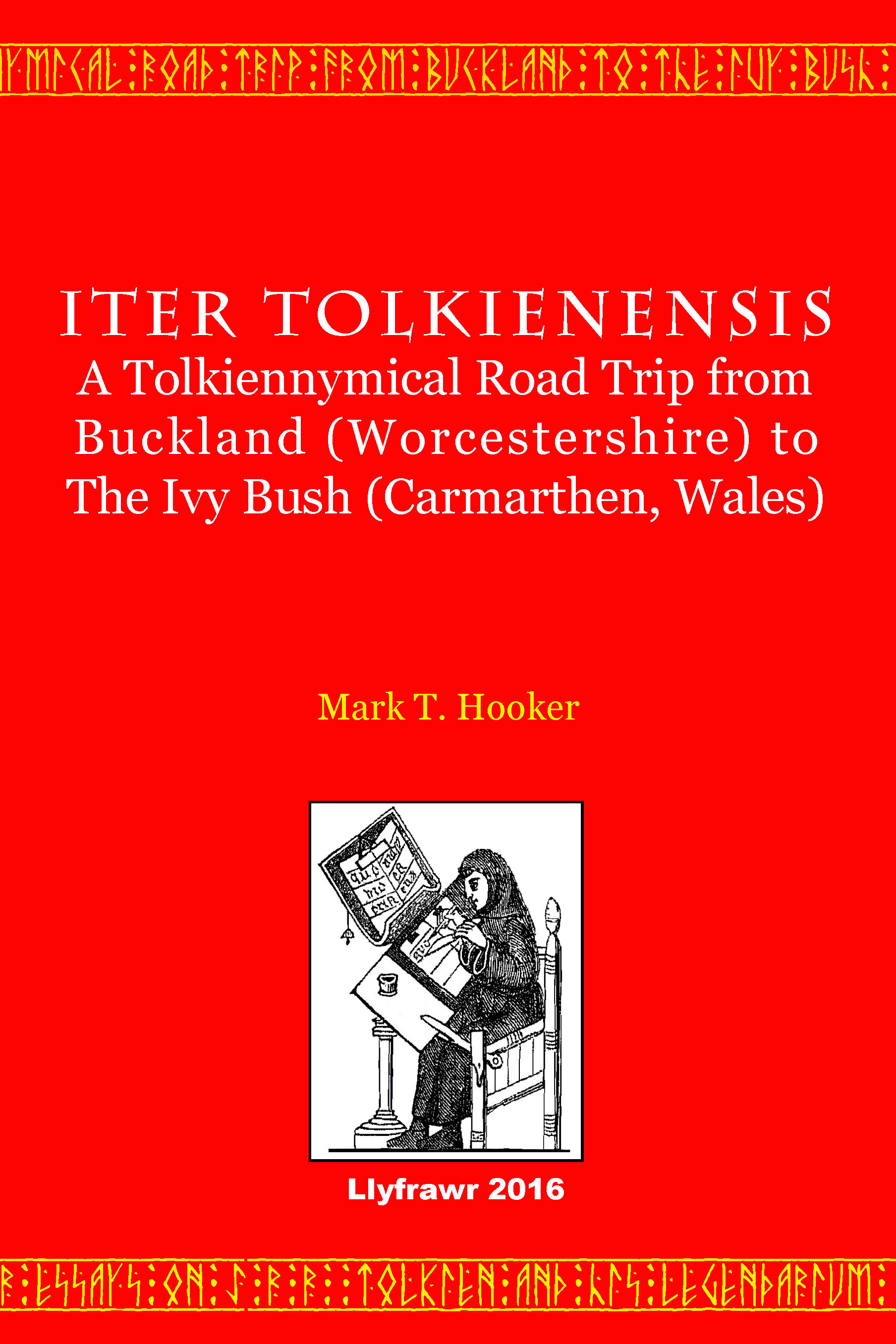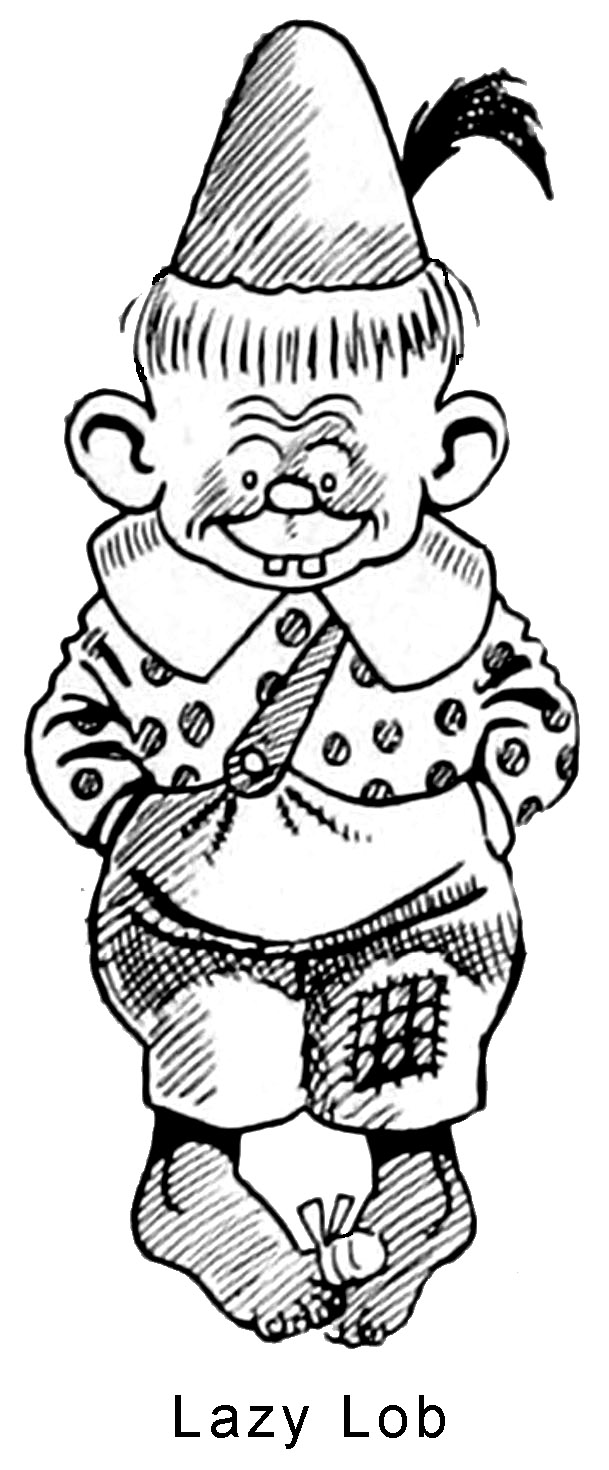Into Afrikaans, Belarusian, Bulgarian, Czech, Danish, Dutch, Frisian, German, Icelandic, Lithuanian, Norwegian, Polish, Romanian, Russian, Serbian, Slovak, Slovene, Sorbian, Swedish, Ukrainian, and Yiddish
|
Also by this author: | Lazy Lob“Soon there came the sound of ‘Lazy Lob’ and ‘Attercop’ from among the trees away on the right.” (H161; AH.216) The construction ‘Lazy Lob’ is so linguistically complex that it cannot realistically be fully replicated in any of the languages of this study. It consists of a number of layers that have to be understood individually in order to comprehend the whole. The first layer is that ‘Lazy Lob’ is an alliterative, taunting epithet. The second layer turns on the same kind of ambiguity found in the word worm (tubular invertebrate | dragon) that is inherent in the insult of calling Smaug a worm1 (H.224). The third layer is that the word lazy is implicit in the definition of noun2 lob. The First Layer Alliteration is a stylistic device to hold a poem together that depends on the repetition of initial consonant sounds of words, rather than on the repetition of the final sound silhouette of words. Technically, it is a phonological mnemonic device, used to help emphasize concepts and make ideas more memorable. Tolkien was familiar with alliterative poetry from his academic work, and employed alliteration in his own poetry. For example, one of Tolkien’s special interests was the Old English epic poem Beowulf, which consists of over three thousand alliterative lines. Tolkien’s translation and commentary on Beowulf 2 was published posthumously in 2014. Piers Plowman is another important English alliterative poem with which Tolkien was familiar. In the 1930s, Tolkien wrote a humorous verse “in the style and metre of the fourteenth-century alliterative poem Piers Plowman,” relating some of the more remarkable mistakes made by students during oral examinations. (Reader’s Guide, p. 214) A brief example of alliterative verse is seen in an Elvish song in The Hobbit, when the travelers first get to Rivendell: The daylight is dying! / To fly would be folly. (H.58; AH.91) The alliteration is built on the repetitions of the ‘D’ and ‘F’ sounds. When Bilbo and Gandalf return to Rivendell, on the way home, Tolkien provides another Elvish song with alliteration: Merry
is May-time, and merry our meeting. / Sing we now softly, … The alliteration is built on the repetitions of the ‘M’ and ‘S’ sounds. Tolkien explained how Anglo-Saxon alliterative poetry functioned. It depends “on a balance; an opposition between two halves of roughly equivalent phonetic weight and significant content, which are more often rhythmically contrasted than similar. They are more like masonry than music.”3 As Chism4 points out in her article on “Alliteration” in J.R.R. Tolkien Encyclopedia, “the archaism of Anglo-Saxon alliterative poetry was not a failing to Tolkien, but rather a link to history, for those who could—by study, reading, and creative composition—tune their ears to hear it; and in his view the prize was well worth the venture.” “A rich tradition of Anglo-Saxon alliterative poetry,” continues Chism, “extended from the seventh through the eleventh centuries, mostly extant in tenth- and eleventh-century manuscripts, but after the Norman Conquest in 1066, English literary culture seems to have faded from the scene, replaced for the next two hundred years by literary writing in French and Latin.” The loss of Anglo-Saxon alliterative poetry is one of the things that Tolkien lamented about the Norman conquest. As Foys5 observed, Tolkien subscribed to the “Norman Yoke” view of the Norman Conquest in 1066. “For Tolkien, the Norman Conquest prevented the survival of a distinctively English language and corrupted the ideal of English life. … the pre-Conquest linguistic and literary elements of Tolkien’s fiction contribute heavily to the central nature, a nature in no small part inspired by imagining what English myth could have been were it not for the reality of the Norman Conquest and the changes it wrought.”
A New English Dictionary on Historical Principles (1908)6 has a headword article for lob. It gives numbered definitions for the variant meanings. Noun1: a spider (archaic) Noun2: • A country bumpkin; a clown, lout. Now dialectical. with an example of: “Farewell, thou Lob of spirits” (Shakespeare, A Midsummer Night’s Dream, Act 2, Scene 1) • Attributive, Rustic; clownish, loutish, clumsy. Also appositionally as quasi-proper name; with an example of: Lob Lie-by-the-Fire—the Lubber fiend, as Milton calls him—a rough kind of Brownie or House Elf. Verb (intransitive): To behave like a ‘lob’ or lout. (Obsolete) The Third Layer English Surnames7 considers that the name Lobb: “may be the same as the provincial word ‘lob,’ signifying looby, of which the original sense is laziness, and the spider may have received the name from his motionless habits while watching for his prey. Hence Lobb, Lobo, corresponding with the German Lobe, Löbbecke, Lübecke, and our own name Lubbock, may be derived from the same sense of indolence which has given the Anglo-Saxon name to the spider.” Slang and Its Analogues Past and Present8 has a headword article for looby, in which it offers the gloss: “A fool; an idle dullard.” In his A Dictionary of the English Language,9 Stormonth glosses to lob along as: to walk lazily, as one fatigued. Adams10 observes that: “The Lancashire word lobb is ‘a heavy, clumsy fellow’.” He compares it to the Welsh llob (a heavy lump, a blockhead) and the Gaelic liobar (a luberly, awkward fellow). In its headword article for lubber, The Century Dictionary and Cyclopedia11 gives the gloss of: “A heavy, clumsy fellow; a sturdy awkward dolt.” The translator, therefore, has to make a number of choices about which elements of this construction to preserve. Given Tolkien’s fondness for alliteration, that should be preserved when possible, even at the expense of a direct equivalence with the sense of the words in the construction (Lazy + Lob). Nine translators managed to preserve an alliteration. Eight translators, obviously recognizing the importance of alliteration to the insult, but unable to preserve it, replaced the alliteration with a rhyme. The GM (S) solution for Lazy Lob was Lahme Lümmel (a scamp; literally: lame man or boy with bad manners). This translation preserves the alliteration, and carries the sense of the English lob (bumpkin, lout), rather than the sense of spider. The second German translator (K) omitted Lazy Lob. The RU (K) translation omitted both insults. Footnotes: 1 “Confound you, Smaug, you worm!” 2 J.R.R. Tolkien, Beowulf: A Translation and Commentary, Christopher Tolkien (ed.), New York and Boston: Houghton Mifflin Harcourt, 2014. 3 J.R.R. Tolkien, The Monsters and the Critics, and Other Essays, London: Allen & Unwin, 1983, p. 30. 4 Christine Chism (Rutgers University), “Alliteration” and “Alliterative Revival,” J.R.R. Tolkien Encyclopedia: Scholarship and Critical Assessment, New York: Routledge, 2006, pp. 8-9. 5 Martin K. Foys, “Norman Conquest,” J.R.R. Tolkien Encyclopedia, New York & London: Taylor and Francis, 2007, pp. 458-459. 6 A New English Dictionary on Historical Principles: Founded Mainly on the Materials Collected by the Philological Society, volume 6, Oxford at the Clarendon Press, 1908, p. 375. 7 Robert Ferguson, “Names Taken from Animals,” English Surnames: And Their Place in the Teutonic Family, London & New York: George Routledge & Co., 1858, p. 186. Emphasis added. 8 John Stephen Farmer, Slang and Its Analogues Past and Present, volume IV (I to Myz), London: printed for subscribers only, 1896, p. 231. 9 James Stormonth, A Dictionary of the English Language, 1895, p. 566. Emphasis added. 10 Ernest Adams Ph.D., “On the Names of the Wood Louse,” Transactions of the Philological Society [of Great Britain] 1860-1, Berlin: A. Asher & Co., p. 10. 11 The Century Dictionary and Cyclopedia, volume IV of X, New York: The Century Co., 1904, p. 3533. |
Pagination: xviii + 270. Trade Paper $14.95.
To learn more about the book, follow the links below.






